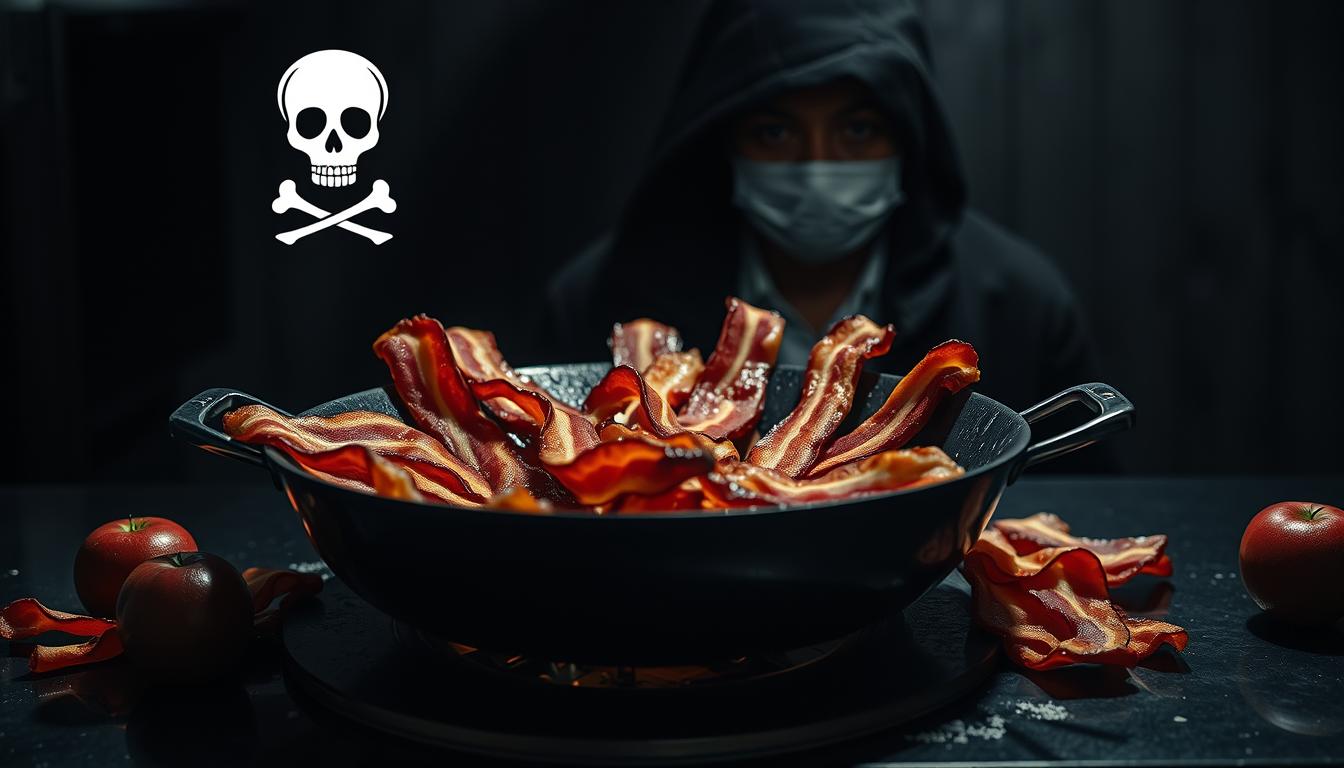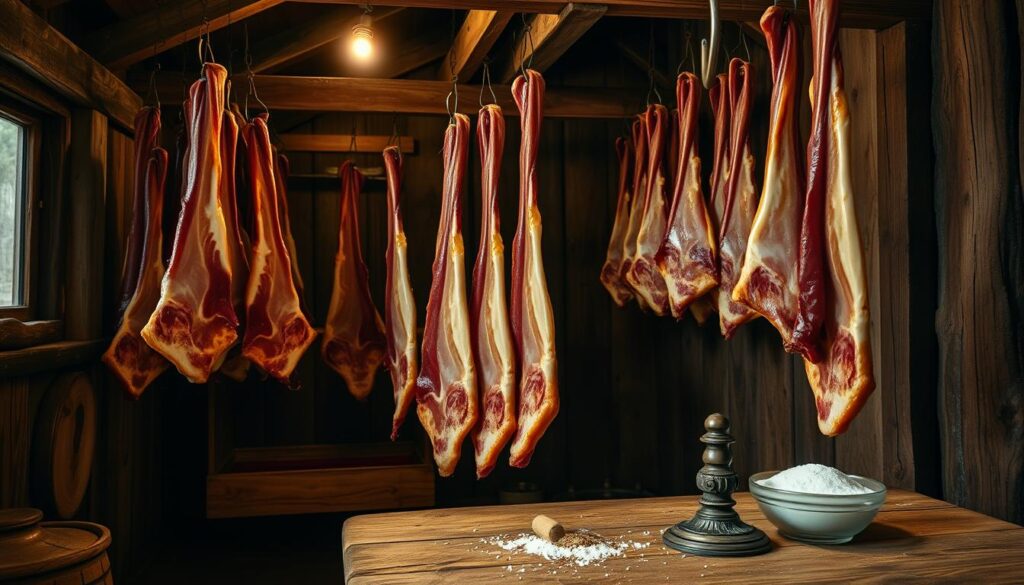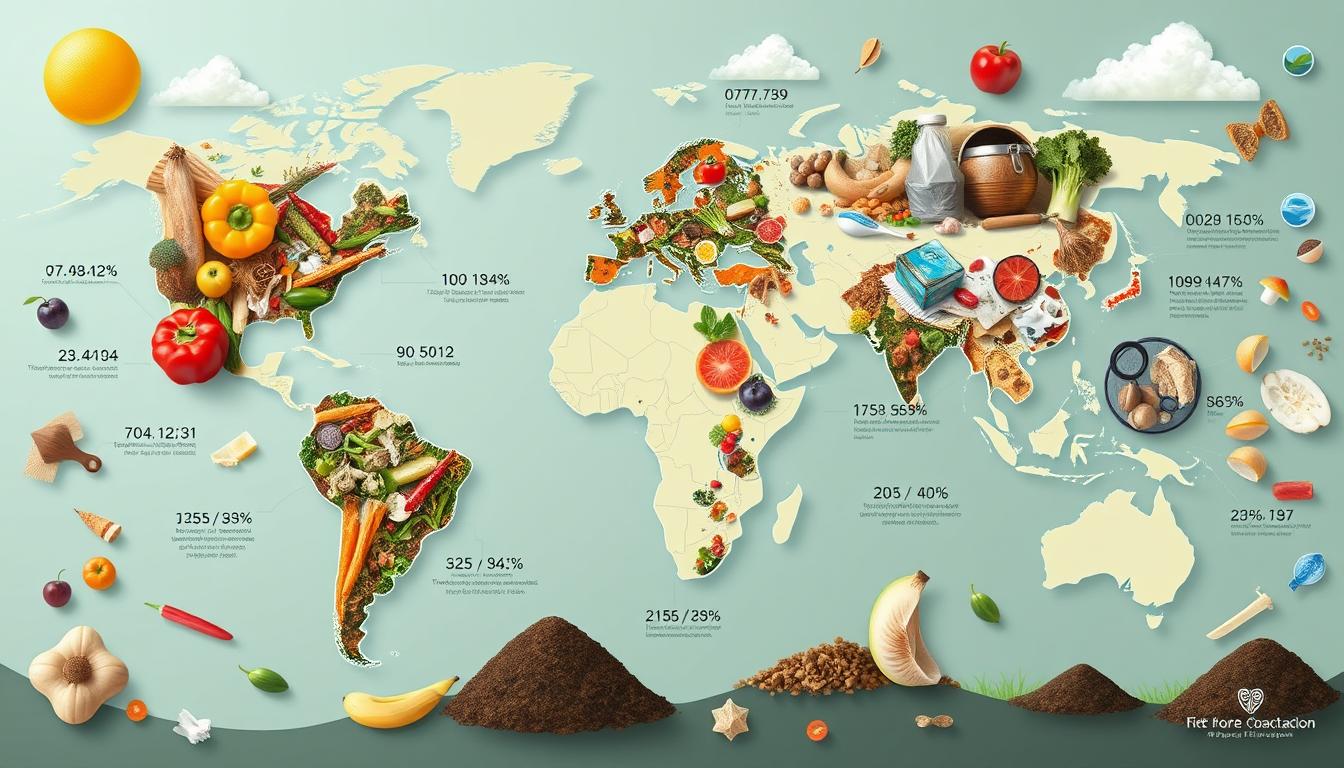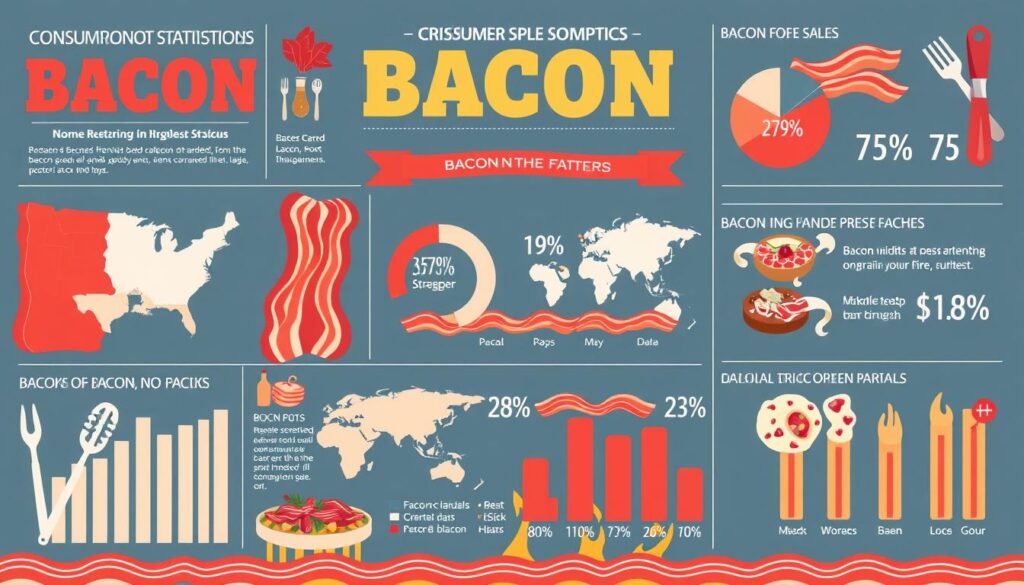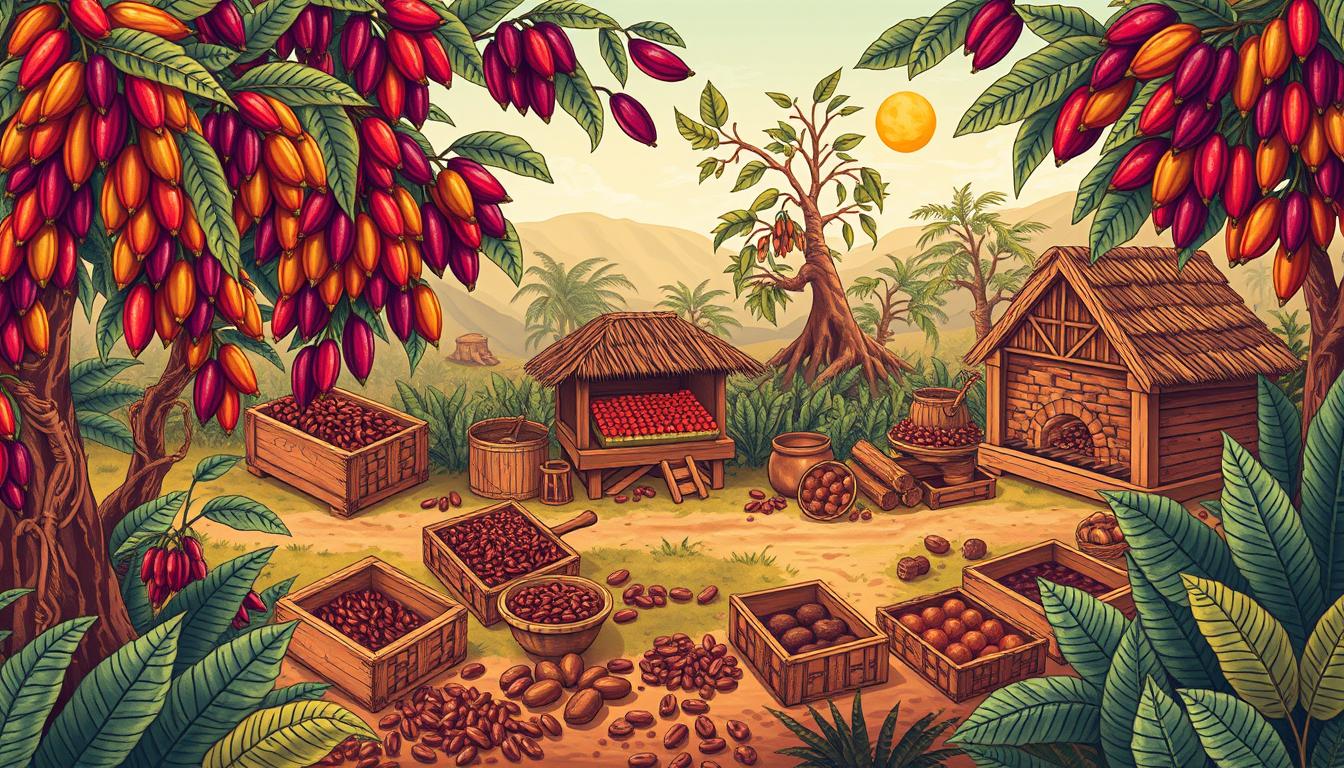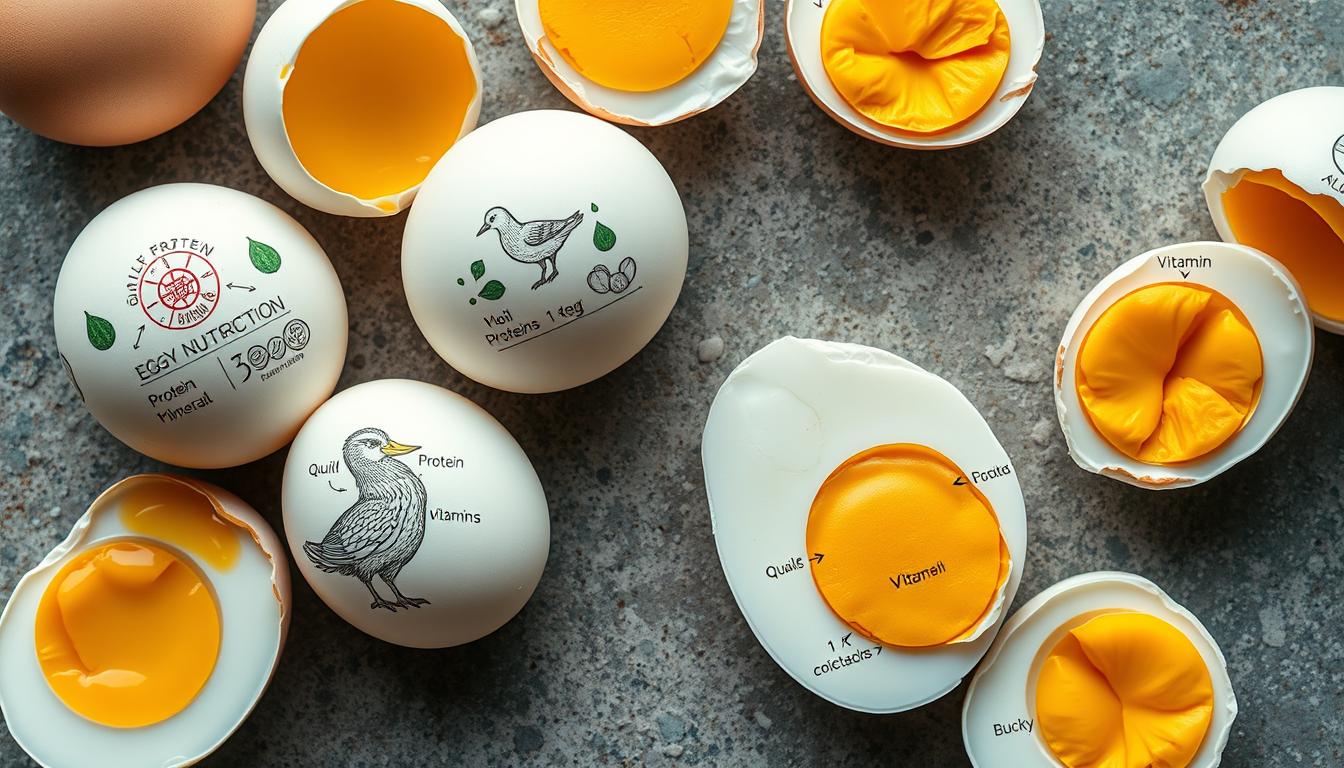Did you know the average American eats 18 pounds of bacon each year? Bacon’s tasty flavor is hard to resist, but its true story is not so appealing. From its ancient beginnings to today’s making, bacon has secrets that might make you think before eating it again.
Bacon’s popularity has grown, with sales reaching $6.4 billion in April 2022, a 3.5% jump from last year. But this rise comes with a price, with bacon prices up 22% from two years ago. Despite this, people are buying 2% more bacon than before the pandemic, showing strong demand for it.
The ease of pre-sliced, pre-packaged bacon seems like a recent invention. But Oscar Mayer patented it in the U.S. in 1924. Kingan & Company in Indiana first made sliced bacon for people in 1914, and trademarked it in 1936.
Exploring bacon’s world is a journey from old curing ways to today’s production. You’ll learn about bacon’s nutritional facts and its environmental effects. By the end, you might rethink your bacon love and look for better, greener options.
Key Takeaways
- The average American consumes 18 pounds of bacon per year, contributing to health risks such as heart disease and certain cancers.
- Bacon is loaded with salt and fat, which enhance flavor but make it unhealthy in excess.
- Bacon is a processed meat treated with nitrites for preservation, linked to increased risk of colorectal cancer and other health issues.
- Pre-sliced, pre-packaged bacon was first invented by Kingan & Company in 1914, with Oscar Mayer later patenting the process in 1924.
- Bacon production has a significant environmental impact, with high resource consumption and greenhouse gas emissions from pig farms.
Table of Contents
- 1 The History of Bacon: Not So Appetizing Origins
- 2 Bacon by the Numbers: Shocking Statistics
- 3 The Science of Swine: How Bacon is Made
- 4 Bacon’s High Fat and Calorie Content Revealed
- 5 Sodium Levels That Will Make Your Blood Pressure Soar
- 6 Preservatives and Additives You Never Knew About
- 7 The Unappetizing Reality of Bacon’s Production Process
- 8 Bacon’s Link to Chronic Diseases
- 9 Environmental Impact: The Dark Side of Bacon
- 10 Bacteria and Parasites Found in Bacon
- 11 The Unpleasant Side Effects of Eating Too Much Bacon
- 12 The Disturbing Conditions of Factory-Farmed Pigs Used for Bacon
- 13 The Shocking Amount of Bacon Consumed Annually
- 14 Debunking Common Myths About Bacon’s Nutritional Value
- 15 The Addiction Factor: Bacon as “Meat Candy”
- 16 Bacon Alternatives That Won’t Gross You Out
- 17 Source Links
The History of Bacon: Not So Appetizing Origins
The history of bacon goes back over 4,000 years. It started with ancient civilizations. The Chinese were the first to cure pork around 1500 BCE to keep meat fresh longer.
Pigs were domesticated in at least seven places around the world.
In the early days, making bacon was not very appealing. People used animal parts and not-so-nice methods. Salt was key in drying and preserving pork until the 16th century. Then, “bacon” meant all pork products.
Ancient bacon-making techniques dating back to 1500 BCE
The Chinese were the first to preserve pork. They used salt and drying to keep meat from spoiling. This helped store pork for longer.
As trade grew, so did the use of curing pork. Different places added their own touches. This made many types of bacon we love today.
Traditional curing methods using animal parts
Early bacon-making used animal parts like bladders and intestines. These methods were needed to keep pork fresh longer.
Today, curing bacon is much safer and better. But knowing how it started is interesting. It shows how bacon has changed over time.
If you want to try something new, bacon waffle recipes are a tasty mix of old and new. They blend bacon’s rich history with a classic breakfast dish.
Bacon by the Numbers: Shocking Statistics
Bacon is a big deal worldwide, with the average American eating 18 pounds of it each year. The demand for bacon is huge, leading to millions of tons being made and eaten every year. Let’s look at some surprising facts about how much bacon people love.
Global Bacon Production and Consumption
The Fresh Bacon Index by CME Group shows how much bacon prices have changed. Prices have gone from $63/cwt to $215/cwt, making bacon values very volatile. This has caused the value of pork bellies to change a lot, dropping from 30% to 25% in just a month.
Despite these ups and downs, pork bellies are getting more of the cutout value over time. The loin primal’s share has dropped from 35% to less than 25% in two decades. Hams, though, have kept their share of the cutout value steady.
Average American Bacon Consumption
In the U.S., bacon prices have gone up a lot, from $1.46 per pound in 1980 to $7.31 in 2022. This is a 400.7% increase, much higher than inflation’s 255.2% rise.
Even with higher prices, Americans keep eating a lot of bacon. In November 2024, bacon cost $6.843 per pound, down from October’s $6.869. But, the price in 2023 was $6.65, a 9% drop from 2022.
Think about this: the average American eats 18 pounds of bacon every year. That’s like 72 quarter-pound servings annually. Here’s a table showing how much bacon the average American eats over different periods:
| Time Period | Bacon Consumed (lbs) | Quarter-Pound Servings |
|---|---|---|
| 1 Year | 18 | 72 |
| 5 Years | 90 | 360 |
| 10 Years | 180 | 720 |
| 20 Years | 360 | 1,440 |
These numbers show how much bacon people love and how much they eat over time. It’s important to think about the health effects of eating so much bacon.
The Science of Swine: How Bacon is Made
Bacon is a favorite for breakfast and adds flavor to many dishes. Its making involves curing and smoking pork belly. The curing method has changed over time, from rubbing meat with salt to using a wet cure method. Before industrialization, families raised and butchered their own pigs for bacon.
Detailed breakdown of the bacon-making process
The first step in making bacon is choosing the right pig breeds. These include Yorkshire, Duroc, and others. The pork belly is then cured, either dry or wet. Dry curing uses a salt and nitrite mix, while wet curing soaks the meat in brine.
Curing methods: dry curing vs. wet curing
After curing, bacon is smoked with wood like applewood. This adds flavor and preserves the meat. The curing and smoking give bacon its pink color, thanks to nitrites and myoglobin.
Smoking process and its effects
Nitrites in bacon have raised health concerns, but they’re safe when used right. Bacon has been enjoyed for thousands of years, even by ancient Romans. Today, the bacon industry offers unique products, showing how much people love bacon.
Bacon’s High Fat and Calorie Content Revealed
Bacon is a favorite for breakfast, but it’s packed with fat and calories. Its tasty flavor and crispy texture are hard to resist. Yet, knowing the health effects of eating bacon is key.
Saturated Fat Overload
Bacon’s high saturated fat is a major concern. Just three slices have 12 grams of fat, with a lot of it being saturated. The Dietary Guidelines suggest we limit saturated fat to 10% of our daily calories, which is about 22 grams for a 2,000-calorie diet.
Eating just a few slices of bacon can quickly exceed this limit. This increases your risk of heart disease and stroke.
Calorie Bomb
Bacon is also very calorie-dense. Three slices have 161 calories, making it easy to eat too much. The average American eats about 18 pounds of bacon each year, adding up to 5,760,000,000 pounds nationwide annually.
Most of bacon’s calories come from fat, with half being saturated. Even small amounts can add a lot of fat and calories to your diet. This can lead to weight gain and health problems if eaten too much.
| Bacon Type | Serving Size | Calories | Fat (g) | Saturated Fat (g) | Sodium (mg) |
|---|---|---|---|---|---|
| Regular Bacon | 3 slices (34.5g) | 161 | 12 | 4.1 | 579 |
| Canadian Bacon | 1 serving (13.8g) | 84 | 0.4 | 0.1 | 137 |
| Turkey Bacon | 1 slice (8.1g) | 30 | 2.1 | 0.6 | 164 |
Bacon can be cooked in many ways, like frying, microwaving, baking, or air-frying. It’s often used as a topping for salads, burgers, and pizza. But, it’s important to eat it in moderation. Choosing Canadian bacon or turkey bacon can lower fat and calorie intake. Yet, always be careful with portion sizes and how often you eat it.
Sodium Levels That Will Make Your Blood Pressure Soar
Bacon is high in salt, which can raise blood pressure and increase the risk of hypertension. Just a few slices of bacon can have almost half the daily sodium limit. This limit is 2,300 milligrams per day for adults.
The Dietary Guidelines suggest eating less sodium. People with certain health risks should aim for no more than 1,500 milligrams of sodium daily.
Eating too much sodium from bacon and other processed meats can lead to stroke and heart disease. Adults with high blood pressure are at higher risk for heart disease and stroke. In the U.S., nearly half of adults have high blood pressure, but only about 25% manage it well.
Regularly eating bacon and other high-sodium foods, like frozen dinners, can raise blood pressure risk. Frozen dinners can have up to 1,340 milligrams of sodium per serving.
Experts call using nitrates and nitrites in bacon “pure insane crazy madness.” These additives are thought to increase cancer risk. Nitrates in deli meats may also raise heart disease risk. Reducing bacon and processed meat intake can lower sodium and improve heart health.
To keep blood pressure healthy, try the DASH diet. It emphasizes fruits, vegetables, whole grains, and low-fat dairy. It also suggests less fat, saturated fat, cholesterol, and sodium. Making smart food choices and cutting down on high-sodium foods like bacon can protect your heart and lower hypertension risk.
Preservatives and Additives You Never Knew About
Bacon is more than just a tasty treat. It often contains preservatives and artificial ingredients that might surprise you. Let’s explore what’s really in this popular breakfast food.
Nitrates and Nitrites
Nitrates and nitrites are used to keep bacon fresh and prevent harmful bacteria. Ninety-seven percent of bacon is made this way, with added preservatives. Sodium nitrite is used to stop botulism. But, when bacon is cooked, these can turn into harmful substances called nitrosamines.
These additives can cause breathing problems, asthma, and other health issues. But, some bacon is now made without these harmful ingredients.
Artificial Flavors and Smoke
Bacon also has artificial flavors and smoke to make it taste better. These come from synthetic sources, not natural ones. Sodium ascorbate keeps the meat from turning brown. Sodium phosphate helps keep it fresh and extends its shelf life.
Watch out for labels that seem too good to be true. Some bacon might claim to be free from certain additives but actually contains them.
| Preservative/Additive | Purpose |
|---|---|
| Sodium Nitrite | Prevents botulism and extends shelf life |
| Sodium Ascorbate | Prevents meat from browning |
| Sodium Phosphate | Maintains freshness, helps flavor absorption, extends shelf life |
| Artificial Flavors | Enhances taste and aroma |
| Smoke Flavorings | Adds smoky flavor without traditional smoking process |
Looking to avoid preservatives in bacon and artificial ingredients? Try nitrate/nitrite-free bacon from local butchers or farmer’s markets. These options are more natural and might cost a bit more.
Being aware of the preservatives and additives in bacon can help you make better choices. Enjoying bacon in moderation and choosing higher-quality options can make it a healthier part of your diet.
The Unappetizing Reality of Bacon’s Production Process
Bacon has been loved for over 4,000 years, starting with the Chinese curing techniques. But today’s bacon making is not as appealing. The use of nitrates and nitrites and the chance of bacterial growth make us question its safety and quality.
Use of Nitrates and Nitrites in Curing
Bacon is a processed meat treated with nitrites for preservation. These additives help prevent bacterial growth but are linked to health risks. Eating too much bacon can increase the risk of colorectal cancer and other diseases.
Bacterial Growth During Curing Process
The curing process can lead to bacterial growth, like Clostridium botulinum, if temperatures are not controlled. This deadly bacterium grows well in low-oxygen environments. So, improperly cured bacon can become a breeding ground for contamination.
Maggot-Infested Bacon Varieties
In rare cases, bad curing and production can cause bacon to be infested with maggots or insects. Though rare, these cases highlight the need for strict quality control in bacon making.
| Bacon Production Step | Potential Risks |
|---|---|
| Curing with Nitrates/Nitrites | Increased cancer risk |
| Improper Temperature Control | Bacterial growth (e.g., Clostridium botulinum) |
| Poor Production Practices | Maggot or insect infestation |
As consumers, knowing the risks in bacon making is key. Two strips of raw bacon have 234 calories and 36% of daily saturated fat. Choosing high-quality bacon in moderation can help reduce these concerns.
Bacon’s Link to Chronic Diseases
Bacon is a favorite breakfast food but comes with health risks. It’s important to know the dangers of eating too much bacon.
Increased Risk of Heart Disease
Bacon has a lot of saturated fats. A 3.5-ounce cooked portion has about 40% of these fats. Eating too much saturated fat can clog your arteries.
The Dietary Guidelines for 2020–2025 say to keep saturated fats under 10% of your calories. Bacon also has a lot of sodium. The American Heart Association recommends no more than 2,300 mg of sodium a day. High sodium in bacon can raise blood pressure in some people.
Studies show eating bacon and other processed meats can increase heart disease risk.
Higher Chances of Developing Certain Cancers
Bacon has additives like nitrates and nitrites. When cooked at high heat, these can turn into harmful compounds called nitrosamines. Eating bacon and other processed meats has been linked to cancers like colon, breast, liver, and lung.
A study found eating moderate amounts of processed and red meat increases bowel cancer risk by 32%. This means about 14 more cases of bowel cancer per 10,000 people.
Nitrites in bacon can turn into carcinogens in the stomach. But, eating nitrites from vegetables doesn’t have the same cancer risks as bacon. A healthy diet and exercise can lower cancer risks.
In summary, while bacon is tasty, it’s important to know the health risks. These include heart disease and certain cancers. Eating in moderation and choosing whole foods can help reduce these risks.
Environmental Impact: The Dark Side of Bacon
The demand for bacon is growing, but so is its environmental impact. Pig farming uses a lot of water, grain, and land. This leads to resource depletion and environmental damage. Producing a ton of pork uses more water than growing vegetables or starchy roots.
Pig farms also create a lot of toxic waste and greenhouse gases. The food system, including farming and land use, is responsible for 21–37% of greenhouse gas emissions. Livestock activities, like pig farming, release methane and nitrous oxide.
Resource Consumption in Bacon Production
Bacon production needs a lot of resources, mainly water. Growing a tomato uses 3.3 gallons of water, but pork takes about 4 million gallons per ton. This shows how much more water bacon uses than other foods.
| Food Item | Water Footprint per Ton |
|---|---|
| Pork (for bacon) | ~4 million gallons |
| Starchy roots | ~102,200 gallons |
| Vegetables | ~85,000 gallons |
| Sugar crops | ~52,000 gallons |
Greenhouse Gas Emissions from Pig Farms
Pig farms release a lot of methane and nitrous oxide, contributing to greenhouse gas emissions. From 2007–2016, agriculture released about 142 TgCH4 and 8.0 TgN2O. These emissions, along with CO2 from deforestation, harm the environment.
Choosing plant-based alternatives to bacon can help reduce our water footprint and support a sustainable food system. By making eco-friendly choices, we can lessen the harm bacon production causes to our planet.
Bacteria and Parasites Found in Bacon
Bacon is a favorite for breakfast, but it comes with risks. It can have dangerous bacteria and parasites. These can cause serious health problems if not handled and cooked right. The CDC says 48 million people in the U.S. get food poisoning each year. This leads to 128,000 hospitalizations and 3,000 deaths.
Eating bacon can also increase the risk of colorectal cancer. For every 2 ounces of processed meat, the risk goes up by 18%.
Salmonella Risks
Salmonella is a common bacteria in bacon. It’s linked to 525,000 foodborne illnesses from pork each year in the U.S. Salmonella and other pathogens can cause severe symptoms like fever, diarrhea, and stomach cramps.
Hepatitis E can lead to liver damage and increase pregnancy-related deaths by up to 30%.
Trichinosis Concerns
Trichinella is another parasite in bacon, causing trichinosis. Though rare, it can happen from eating raw or undercooked bacon. Symptoms include nausea, vomiting, fever, and muscle pain.
The USDA says pork, including bacon, must be cooked to 145°F (62.8°C) to be safe.
Bacon can also trigger immune system reactions. This is due to substances like ‘Alpha Gal’. These reactions can lead to delayed anaphylactic attacks 3-6 hours after eating bacon or pork.
| Pathogen | Health Risks |
|---|---|
| Salmonella | Severe food poisoning, diarrhea, fever |
| Hepatitis E | Liver damage, increased mortality in pregnant women |
| Trichinella | Trichinosis, nausea, vomiting, fever, muscle pain |
To avoid risks from bacon, cook it until crispy. Don’t eat undercooked or raw bacon. Be aware of the health risks of processed meats. Eat bacon in moderation.
The Unpleasant Side Effects of Eating Too Much Bacon
Eating too much bacon can cause many problems. It can upset your stomach and affect your health. Bacon has a lot of fat, which can lead to indigestion, bloating, and heartburn. Just three slices of bacon have almost 5 grams of saturated fat, more than the American Heart Association recommends.
Bacon can also make your body inflamed. The fat in bacon can increase your risk of heart disease. Studies show that eating more than 150 grams of processed meat a week can raise your risk by nearly 46%. Bacon also has a lot of sodium, and most Americans already eat too much salt.
Digestive Issues
Greasy foods like bacon can harm your gut bacteria. This can cause many digestive problems, such as:
- Indigestion
- Bloating
- Heartburn
- Abdominal discomfort
| Nutrient | Amount per Slice |
|---|---|
| Calories | 110 |
| Protein | 3.8 g |
| Fat | 10.4 g |
| Saturated Fat | 3.5 g |
| Sodium | 210 mg |
A single slice of bacon is full of calories, fat, and sodium. Eating too much can cause digestive problems.
Increased Inflammation
The fat in bacon can make your body inflamed. This can worsen conditions like arthritis. Eating processed meats, like bacon, can increase your risk of heart disease and diabetes. The World Health Organization says bacon can cause cancer.
Processed meats, like bacon, can increase your risk of colon, stomach, esophageal, and pancreatic cancer. Eating them daily can also raise your risk of Alzheimer’s disease and dementia by 52% and 44%, respectively.
While bacon has some good nutrients, its saturated fat is a bigger problem. Leaner alternatives, like Canadian bacon, are a better choice for those trying to avoid bacon’s negative effects.
The Disturbing Conditions of Factory-Farmed Pigs Used for Bacon
Do you think about the pigs raised for bacon when you eat it? Most bacon in the U.S. comes from pigs in bad factory farms. These places don’t care much about animal welfare. About 97% of U.S. pigs live in these tough conditions, making the U.S. a big player in pork production.
Pigs in factory farms have a hard life. Sows are stuck in tiny crates for most of their lives, going through six breeding cycles before being killed. They have many piglets, but these are taken away too early, at 10-21 days old. The piglets also face painful procedures like castration and tail docking without anesthesia.
Factory farms are overcrowded, with pigs having no room to move or act naturally. They live in dirty conditions, needing antibiotics all the time. Each pig uses a lot of water, up to five gallons a day. The suffering of these pigs is a big concern when thinking about bacon.
| Factory Farming Statistic | Value |
|---|---|
| Percentage of U.S. pigs raised in factory farms | 97% |
| Number of pigs slaughtered per hour in a typical slaughterhouse | 1,000 |
| Average number of litters per sow before slaughter | 6 |
| Typical age of piglets when separated from mothers | 10-21 days |
More people are learning about the bad conditions in pig factory farming. They’re thinking if eating bacon is worth the suffering of the pigs. Choosing plant-based or sustainable pork can help make the industry better.
The Shocking Amount of Bacon Consumed Annually
Get ready for some surprising bacon facts. Americans eat almost 18 pounds of bacon each year. That’s a total of 5.7 billion pounds across the country. With 268 million people enjoying bacon, the amount we consume is truly mind-boggling.
Bacon’s popularity keeps growing. Between 2001 and 2009, its use in food services jumped by almost 25%. From 2011 to 2013, bacon use increased by 2.4% each year. This trend shows no signs of stopping. Bacon is loved everywhere, from the mainland to Hawaii and Alaska.
The love for bacon goes beyond just eating it. Bacon-themed items make up about 10% of sales for some companies. Online, bacon gets a lot of attention and engagement. It’s clear that bacon’s popularity is not fading, and it’s growing in the market.
Sandwiches with bacon are a hit, and people often ask for more bacon. Bacon is a food trend that keeps getting more popular each year. There’s no end in sight to its appeal. Here are some shocking bacon consumption figures:
| Statistic | Amount |
|---|---|
| Average annual bacon consumption per American | 18 pounds |
| Total annual bacon consumption in the U.S. | 5.7 billion pounds |
| Growth in bacon volume in food services (2001-2009) | 25% |
| Annual growth rate of bacon consumption (2011-2013) | 2.4% |
As bacon’s popularity soars, it’s important to know how it’s made. A 1951 U.S. Department of Agriculture survey showed different brining methods used by farmers. New methods like sweet curing and direct nitrite curing have improved bacon’s taste, color, and safety.
Debunking Common Myths About Bacon’s Nutritional Value
Bacon is not a health food, despite its growing popularity. Many believe that bacon’s saturated fat and cholesterol are safe. But, this is not true. In 2015, the World Health Organization labeled processed meats, including bacon, as carcinogens. They suggest eating no more than three portions of red meat a week.
Some think “uncured” or nitrate-free bacon is better. But, these products can have similar health risks. A study showed mice fed Herta frankfurters got 82% more colon tumors. While an occasional slice of ham might be okay, it’s key to watch your processed meat intake.
Recently, some companies have made nitrate-free bacon. In 2018, Finnebrogue showed nitrate-free bacon butties in the UK. France also plans to stop using nitrates by July 2022, with many products already nitrate-free. Yet, Finnebrogue’s nitrate-free bacon is very expensive.
| Myth | Reality |
|---|---|
| Saturated fat and cholesterol in bacon are harmless | Bacon is a major contributor to heart disease |
| “Uncured” or nitrate-free bacon is healthier | These often contain similar preservatives and risks |
Some believe eating more bacon can fight swine flu. This idea spread among bacon fans during the outbreak. But, it’s important to know that cooking bacon at 160°F/70°C kills the swine flu virus, according to the WHO. Eating more bacon does not protect you from the virus.
In conclusion, while bacon is loved by many, it’s not good for you. Don’t fall for the myths about bacon’s health benefits. Instead, eat a balanced diet with whole foods and less processed meat like bacon. By knowing the truth about bacon nutrition myths, you can live a healthier life.
The Addiction Factor: Bacon as “Meat Candy”
Bacon is like “meat candy” because it’s so hard to resist. Its taste is a mix of things that make our brains happy, like addictive substances.
Bacon’s high fat and salt levels are key. The fat in it makes our brains release dopamine, a chemical linked to pleasure. This can make us feel as good as we do with addictive drugs.
Bacon also has umami, which adds a savory taste. This taste boosts the brain’s reward centers, making bacon even more addictive. For some, the urge to eat bacon is like an addiction, hard to control.
Chemical Compounds in Bacon Affecting the Brain
Several chemicals in bacon make it addictive:
- Glutamate: An amino acid that adds umami flavor and excites brain receptors
- Guanylic and inosinic acids: These flavor enhancers work with glutamate to make umami taste stronger
- Nitrates and nitrites: These preservatives add to bacon’s savory taste and color
Comparison to Addictive Substances
| Addictive Substance | Effect on Brain | Bacon Similarity |
|---|---|---|
| Cocaine | Triggers dopamine release | High-fat content stimulates dopamine |
| Nicotine | Activates reward pathways | Flavor enhancers stimulate reward centers |
| Sugar | Spikes dopamine levels | Salt and umami compounds boost craveability |
Bacon isn’t a drug, but it affects our brains in ways similar to addictive substances. Its strong flavor and texture can make us crave it. Knowing how bacon can be addictive helps us make better choices about eating it.
Bacon Alternatives That Won’t Gross You Out
Looking for healthy bacon substitutes that taste great? There are many tasty bacon alternatives to try. Plant-based bacon has become more popular, with a 23% rise in interest over three years. This shows more people want healthier options.
Tempeh bacon, made from soy, is meaty and has 13 grams of protein. It has about 60 calories per serving, more than traditional bacon’s 42 calories.
Coconut bacon is another vegan choice that’s crispy and full of fiber and healthy fats. Mushroom or eggplant “bacon” offer a savory taste with fewer calories and no cholesterol. The sales of plant-based bacon alternatives have grown by 37% in the last quarter, beating expectations by 12%.
Bacon alternatives are 15% pricier than regular bacon, but organic ones can be 30% more expensive. Yet, their health benefits and eco-friendliness make them a good choice. The Midwest has seen a 45% increase in sales, while coastal areas have seen a 28% rise. This shows bacon alternatives are gaining acceptance everywhere.
Source Links
- Bacon Battles Soaring Inflation with Innovation – The Food Institute – https://foodinstitute.com/focus/bacon-battles-soaring-inflation-with-innovation/
- Sliced Bacon was Invented in Indiana But Its Creators Don’t Seem to Get Credit for It – https://wkdq.com/sliced-bacon-invented-in-indiana/
- Bacon: a delicious investment – https://passionateomnivore.wordpress.com/2011/05/06/bacon-put-your-money-where-your-mouth-is/
- Bacon Prices Adjusted For Inflation | US Inflation Calculator – https://www.usinflationcalculator.com/inflation/bacon-prices-by-year-and-adjusted-for-inflation/
- Bacon is Back – https://www.fb.org/market-intel/bacon-is-back
- Science of bacon & cured meats – How it’s made – https://foodcrumbles.com/english-breakfast-on-british-bacon/
- The Fascinating, Untold Truth About Bacon – Mashed – https://www.mashed.com/21298/fascinating-untold-truth-bacon/
- Bacon Nutrition Facts and Health Benefits – https://www.verywellfit.com/bacon-calories-and-nutrition-facts-3495344
- 9 Unfortunate Truths About Juicy, Scrumptious Bacon – https://www.huffpost.com/entry/bacon-facts_n_4241592
- 13 Worst Foods for High Blood Pressure – https://www.eatthis.com/worst-foods-high-blood-pressure/
- Diet and Hypertension – 9.318 – Extension – https://extension.colostate.edu/topic-areas/nutrition-food-safety-health/diet-and-hypertension-9-318/
- Yes, bacon really is killing us – https://www.theguardian.com/news/2018/mar/01/bacon-cancer-processed-meats-nitrates-nitrites-sausages
- Everything You Need To Know About Bacon | TexasRealFood – https://www.texasrealfood.com/promptuary/bacon-sausages/bacon/
- The Secret Ingredients in Ham and Bacon » Additive Free Lifestyle – https://additivefreelifestyle.com/ham/
- 5 Things You Didn’t Know About Bacon – https://recipes.howstuffworks.com/5-things-didn-t-know-about-bacon.htm
- Is Bacon Bad for You, or Good? The Salty, Crunchy Truth – https://www.healthline.com/nutrition/is-bacon-bad-or-good
- Cured vs. Uncured Bacon – https://www.healthline.com/health/cured-vs-uncured-bacon
- How does processed meat cause cancer and how much matters? – https://news.cancerresearchuk.org/2024/08/01/bacon-ham-hot-dogs-salami-how-does-processed-meat-cause-cancer-and-how-much-matters/
- Meat Makes Our Planet Thirsty – Slashdot – https://science.slashdot.org/story/14/03/10/1144252/meat-makes-our-planet-thirsty
- Food Security — Special Report on Climate Change and Land – https://www.ipcc.ch/srccl/chapter/chapter-5/
- Can You Eat Raw Bacon? – https://www.healthline.com/nutrition/can-you-eat-bacon-raw
- Bring Home the Bacon? I Don’t Think So – https://www.3in1nutrition.com/posts/bring-home-the-bacon-i-dont-think-so
- Blood Type Diet and Bacon – Dr Robert Brody – https://brodynd.com/blood-type-diet-bacon/
- What Happens to Your Body When You Eat Bacon – https://www.eatthis.com/is-bacon-bad-for-you/
- How Bad Is Bacon for You? – https://www.medicinenet.com/how_bad_is_bacon_for_you/article.htm
- The Truth About Bacon – https://www.webmd.com/diet/features/truth-about-bacon
- Pig Farming Uncovered: The Pork Industry’s Disturbing Truths – https://sentientmedia.org/pig-farming/
- You Should Keep Bacon off of Your Plate! – https://www.petakids.com/save-animals/bacon/
- The Complete History of How Bacon Took Over the World – https://newsfeed.time.com/2013/11/15/the-complete-history-of-how-bacon-took-over-the-world/
- Bacon Curing – a Historical Review – https://earthwormexpress.com/about-meat-curing/functional-ingredients/bacon-curing-a-historical-review/
- The truth about nitro-meats: my seven-year search for better bacon – https://www.theguardian.com/food/2023/sep/18/the-truth-about-nitro-meats-my-seven-year-search-for-better-bacon
- Swine Flu Myths: Wash Your Hands, Eat the Bacon – https://www.cnbc.com/2009/04/29/swine-flu-myths-wash-your-hands-eat-the-bacon.html
- Dan Quibell: Dropping 20 Pounds in 30 Days with The Bacon Experiment & Why The Quality of Your Meat Matters – https://fatburningman.com/dan-quibell-dropping-20-pounds-in-20-days-with-the-bacon-experiment-why-the-quality-of-your-meat-matters/
- And in other news, “nitrate free” bacon sold in the US isn’t actually nitrate fr… – https://news.ycombinator.com/item?id=16511104
